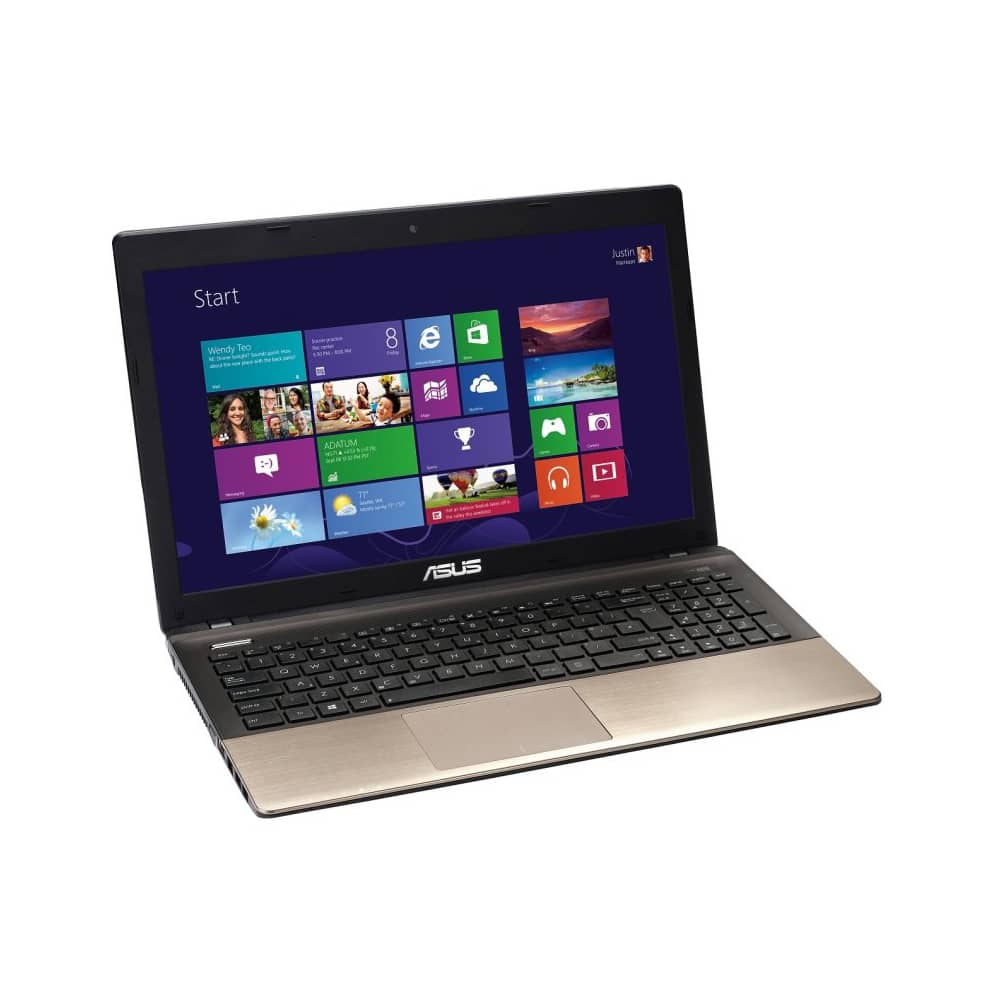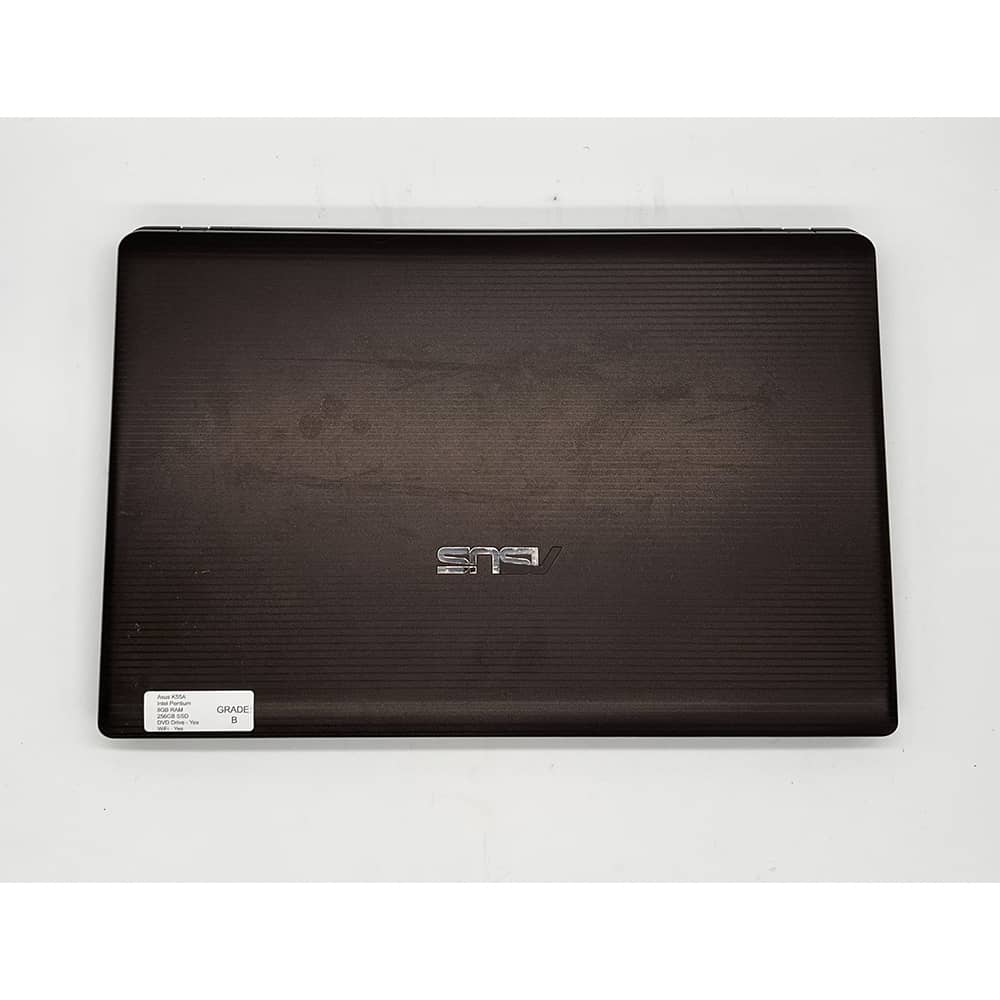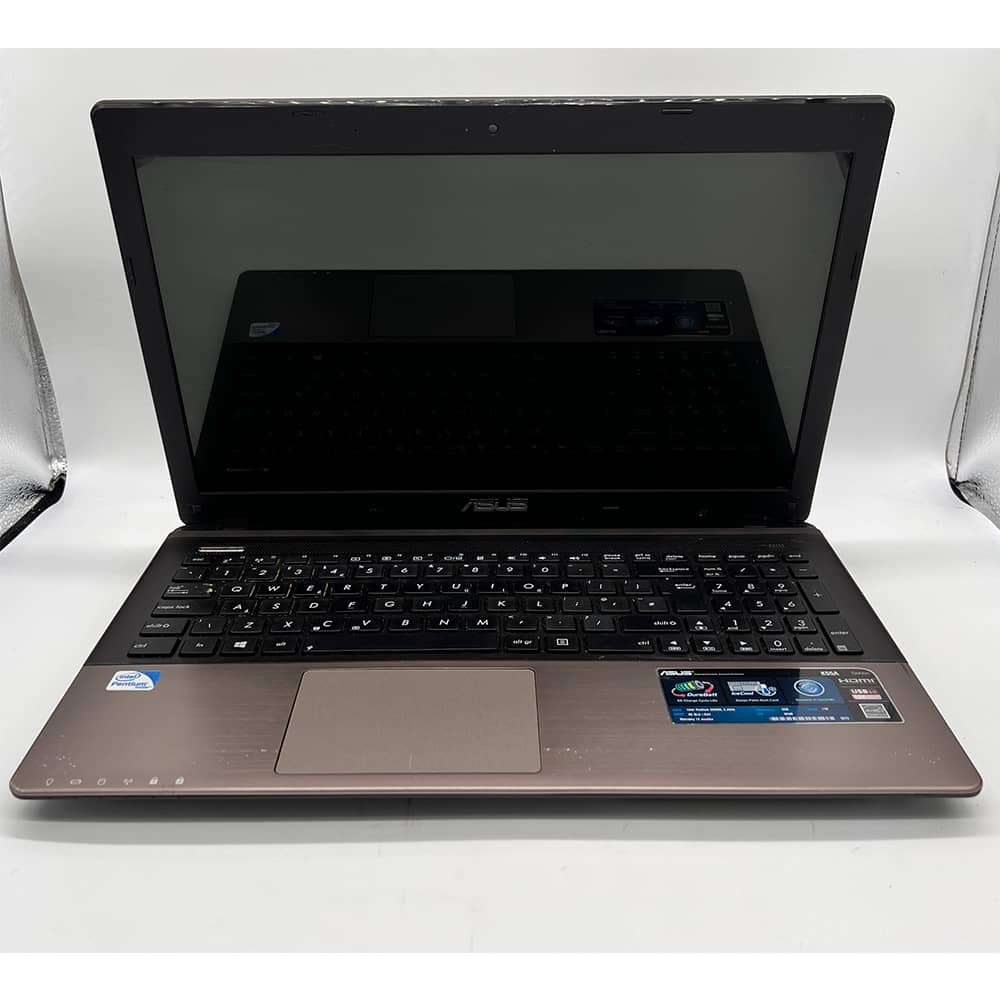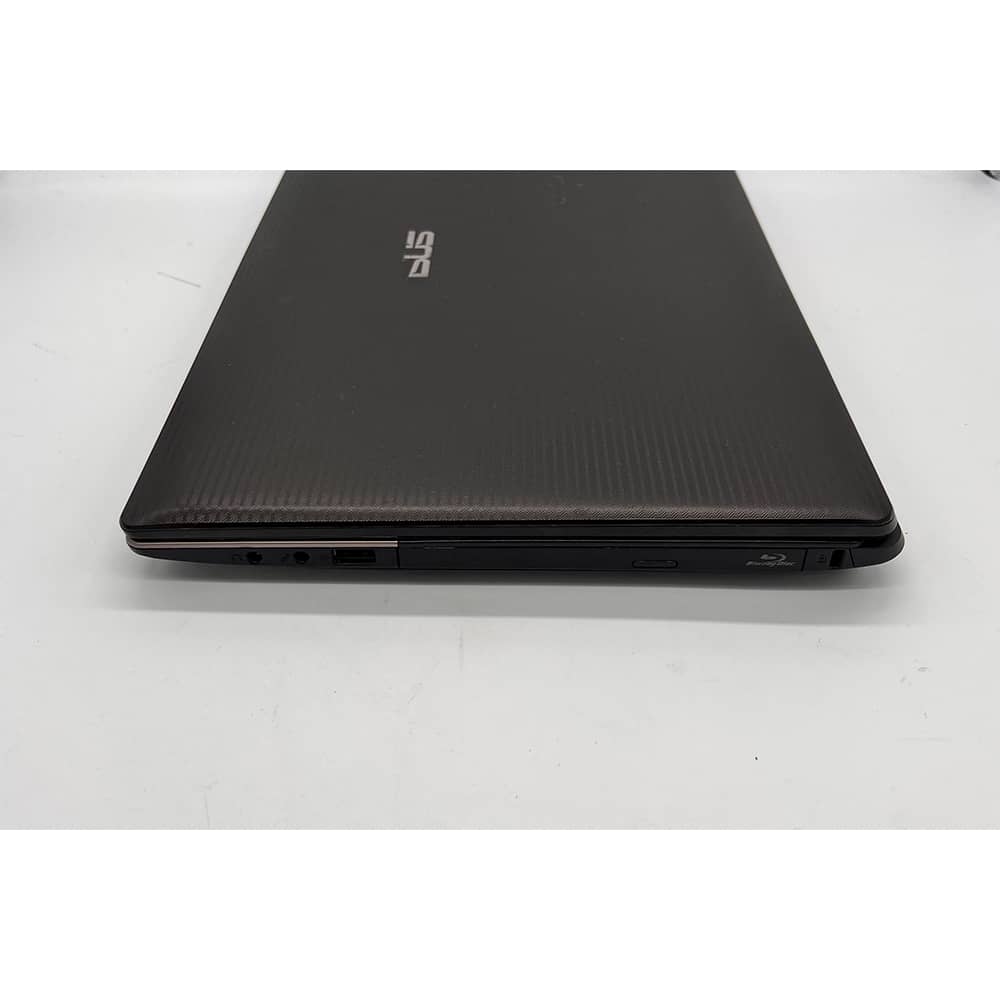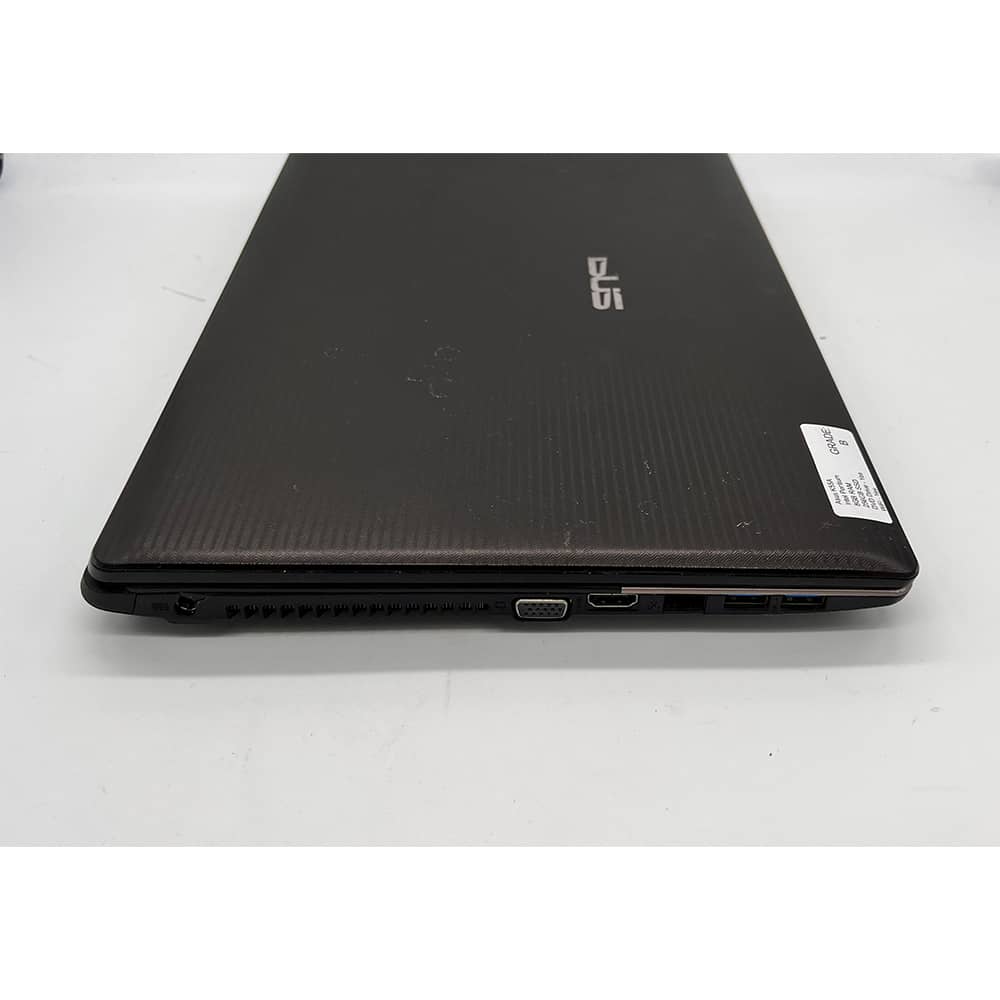- 01635 886363
- info@itsalesgurus.co.uk
Next Day UK Delivery
Free 6 Month RTB Warranty
Microsoft Registered refurbisher
Reduce your carbon footprint
At first glance, the K55A definitely looks a cut above its price. The aforementioned metallic lid and wrist rest give an appearance of stylish quality. However, the remaining areas are finished in a matt plastic that looks durable, but doesn’t exude the same splendour. With a 15.6in screen, the K55A is a relatively chunky beast as well, weighing in at 2.5kg and 31.9mm at its thickest point, although the remaining proportions are as expected for a notebook of this form factor.
Cut cost processor
The processor is the main area where this K55A cuts costs. Instead of the Intel Core CPUs we see in most of the notebooks we review, Asus has taken the Celeron route. In this case, the 1.7GHz Intel B820 is provided. The main difference between this and a Core processor is the lack of Hyper-Threading. So the two physical cores present themselves as just two cores, not four virtual ones. The Celeron, like the Pentium and Core i3 processors, also lacks Turbo Boost, so won’t increase its clock speed when under load. This is still a 35W processor, though, so won’t have any particular power consumption benefits over CPUs with faster clock speeds.
The B820 is also from Intel’s Sandy Bridge generation, so incorporates HD 3000 rather than HD 4000 graphics. The HD 3000 series is significantly less powerful than the Ivy Bridge generation HD 4000 graphics, but at least the version of HD 3000 within the B820 sports a standard 650MHz clock and 1,050MHz Turbo mode, so is towards the top end of this chipset’s capabilities. Asus has also sensibly supplied 6GB of 1,333MHz DDR3 system RAM. Since the graphics takes some of this for its own usage, there will still be a healthy 4GB or more free for the operating system and applications.

(opens in new tab)
Storage is generous, too. Unsurprisingly, there is no solid-state disk in sight, as this would rather ruin the budget orientation of this system. However, the main Seagate Samsung ST1000LM024 hard disk, partitioned into two, has a whopping 1TB capacity. This is only a 5,400rpm drive, so not a top performer, but there will be plenty of space for video and audio collections. There’s a Slimtype DVD A DVD writer fitted into the K55A, although the physical eject button is quite hard to operate. At first glance, an SD card reader appears to be absent. But it’s hidden under the front edge of the notebook on the left.

(opens in new tab)
The 15.6in display only offers a resolution of 1,366 x 768, which is no greater than most 13.3in screens. In a more expensive notebook, we would have expected 1,600 x 900, but at this price the resolution is fine. Viewed from straight ahead, the screen provides rich colour and good clarity, making it decent for watching video. However, the shiny surface does make horizontal viewing angles merely mediocre, whilst vertical viewing angles are as poor as most notebook screens. Audio quality is reasonable, with at least some semblance of bass and a good level of volume available.

(opens in new tab)
The island-style keyboard is comfortable enough, although the keys have a very noticeable click to them that won’t suit every typist. The large trackpad is coloured in line with the wrist rest, with button areas delineated at the bottom but no actual buttons. Multitouch is enabled by default, and the keypad responds well to multi-fingered action. Its positioning slightly to the left also means the palms of your hand don’t touch it when you are typing, unlike Asus’ own Zenbook Prime UX32A(opens in new tab). The K55A has the port allocation we would expect for a notebook this size. On the left can be found two USB 3.0 ports, Gigabit Ethernet, HDMI and VGA, ahead of a large temperature vent and the power connection. The right is home to separate minijacks for headphones and microphone, a USB 2.0 port, the optical drive, and a Kensington lock. There are no ports around the back.

(opens in new tab)
With its Intel Celeron processor and HD 3000 graphics, the K55A-SX373H is never going to ace any performance benchmarks. Its result of 0.83 in the Cinebench R11.5 rendering test shows how much the Celeron loses without Hyper-Threading or Turbo Boost. HP’s Folio 13(opens in new tab), for example, on paper has a slower clocked processor of the same generation, but achieved more than twice the rendering score. Similarly, the OpenGL result of 4.84 is the lowest we have recorded, even behind Samsung’s Series 5 Ultra 530U3B-A01(opens in new tab). However, the Futuremark 3DMark06 result of 3150 is a little more respectable, showing at least some ability to play DirectX 10 games. However, this is still noticeably behind most HD 4000-equipped notebooks, and there is no hardware support for DirectX 11.

(opens in new tab)
Battery performance is surprisingly good for a desktop replacement-oriented notebook such as this. The K55A managed 114 minutes of our 100 per cent CPU and graphics torture test, which is quite a bit ahead of the 17in desktop replacements we have reviewed here at ITProPortal.com. You should be able to watch a feature-length film on the move with the K55A, and 4-5 hours of general office work seems plausible as well, making this a flexible all-rounder if not a specialist in any particular area.

